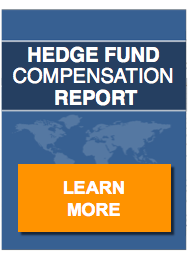Snapping a 15-month winning streak, hedge funds saw negative aggregate gains in February, posting a disappointing –1.84 percent return for the month. Nonetheless, HFR reports the industry remains in positive territory for the year, with a net year-to-date gain of fifty basis points.
Expectations
No one should be surprised by this turn of events. The hedge fund industry was invested heavily in equity strategies, and it was bound to take a hit when the markets plummeted in the opening days of February.
The trajectory of the markets suggests that March will see the return of positive gains in the industry. More importantly, this stutter-step is not compounded by any evidence of a decline in hedge fund investor confidence. In fact, according to a Credit Suisse survey, hedge fund investors have expectations of an 8.5 percent return in the 2018 calendar year. That is an increase of 1.2 percent over last year’s 7.3 percent and marks the highest level of investor expectation since 2012, when investors anticipated a return of 8.6 percent.
Investor Confidence
Some will argue that it is not investor confidence in hedge funds that is driving the industry, but rather a lack of investor confidence in the direction of the broader markets. For example, the S&P’s high-water mark on January 26 to its low on February 8 saw the index underwater by as much as 11.84 percent.
This apparent return to volatility has inspired investors to take a hard look at hedge fund investment. Add to this, the fact that about 70 percent of investors in the Credit Suisse survey are paying less in fees than the traditional 2 and 20, leaving only 30 percent paying 2 and 20 or greater.
Better performance, lower fees, and growing market uncertainties are the principal drivers for hedge fund investors today—that, along with a dash of concern regarding the direction the FOMC will take with interest rates.
Jobs Report
Total non-farm employment rose by 313,000 in February, with the lion’s share of this number occurring in construction, retail trade, professional and business services, manufacturing, financial activities, and mining.
At the same time, the unemployment rate remained at 4.1 percent for the fifth month running. This is the principal reason wages have been slow to rise. It appears that those individuals who had dropped out of the labor force have been encouraged to return to the job market, thus meeting demand and holding the unemployment rate steady at 4.1 percent.
As long as this phenomenon persists, wages are unlikely to rise in a significant way, which means that inflation will be held in check until job growth has exhausted the supply of dropouts willing to return to gainful employment. Given the current labor participation rate of 62.9 percent, it is reasonable to project that unemployment and wages will remain relatively flat for the foreseeable future.
In Conclusion
If this scenario plays out, hedge funds can look forward to minimal interference from the Federal Open Market Committee (FOMC) with respect to interest rate hikes, at least hikes beyond those already put forward. Additionally, the planned draw down of the Fed’s balance sheet will continue, unabated by inflationary pressures. All-in-all, excellent news for the hedge fund industry.


